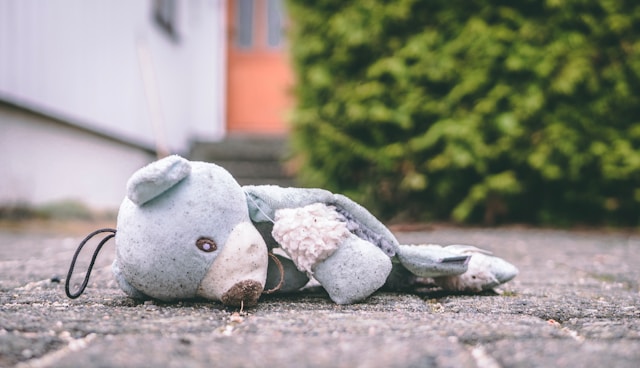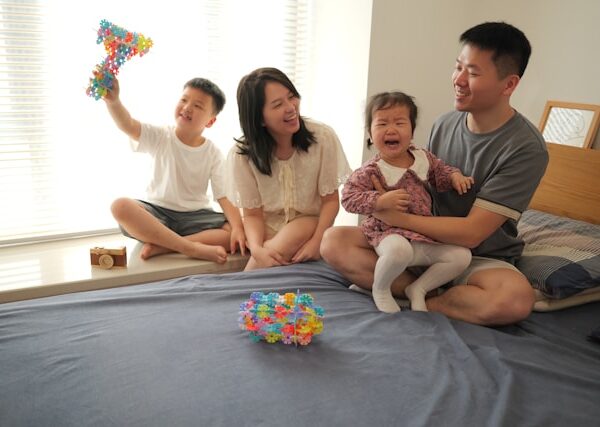First posted to: https://surehopecounseling.com/healing-from-a-fear-bonded-low-joy-childhood/

One of the most significant types of bonds between two people is the bond between parent and child. The impact of this formative relationship, forms the foundation for a felt sense of safety and security, while establishing a framework for future relationships. Joy is a vital experience for emotional and mental health, yet many of us experienced the opposite of joy in our earliest relationships and environments. The reality of living in a broken and sinful world guarantees the experience of pain, but the way pain is processed determines levels of health and joy in the family of origin. Is pain something that is avoided, numbed, and not accepted or is it noticed, felt, metabolized, and used for growth? In addition to how pain is processed, joy is stifled in the home when fear-bonds dominate over love-bonds. Families that are fueled by fear create low-joy environments that multiply pain and lead to low maturity levels, poor mental, and relational dysfunction.
Fear and Love Bonds
In Living from the Heart Jesus Gave You, Friesen et al. (2016) describe the importance of bonds in the maturation process saying, “bonds are connections that energize us, motivate our actions and establish our identities”. The text goes on to say, “Fear bonds are formed around avoiding negative feelings and pain. Love bonds are formed around desire, joy and seeking to be with people who are important to us. Fear bonds energize people to avoid pain – like rejection, fear, shame, humiliation, abandonment, guilt, or even physical abuse. Love bonds motivate people to live in truth, closeness, joy, peace, perseverance, kindness, and authentic giving” (p.59). The types of bonds we experience in early childhood shape our motivation. Are we motivated by fear, anxiety, guilt, and shame or are we motivated by love to remain faithful, truthful, and helpful when under pressure? Considering how we are motivated helps to determine which bond is most active. For instance, what motivates us to lose weight, land a certain job, interact with our children, or go to church/pray/connect to God? Do we engage with any of these because of a fear or shame message we believe? Odds are that fear-bonds are present in some way AND that they were established and nurtured throughout childhood in the home or with a parent/primary caregiver/core relationship.
Low Joy versus High Joy
Joy is not just an emotion or spiritual experience as mentioned in scripture. In Joy Changes Everything, Wilder (2014) concludes that brain science points to joy being relational above all else. He states, “from a human brain perspective, joy is more of a dynamic relational experience. Joy is a ‘glad to be together’ state amplified between two minds that are glad to be together at that moment. Joy is relational. High joy is found in smiles, play, and love. Low joy is found in depression, aggression, and shame” (Wilder, 2014, p.47). In low-joy homes, managing problems is prioritized over relational connection, conflicts are not resolved, addictions and narcissism are present, and the pseudo-self is preferred. The fear messages that are central motivators can become rooted as core beliefs about self, others, and the world. On the other hand, high-joy relationships and environments are made up of love-bonded people who are connected to their true selves and are able to return to joy when experiencing the inevitable frustrations, pain, and sorrows of life.
Healing Fear-Bonds and Returning to Joy
No matter what type of bond or joy-level you experienced in childhood, healing is possible. Shifting from fear-bonded, low-joy relationships to love-bonded, high-joy relationships begins by opening up to self-reflection with a willingness to work through what is discovered. Friesen et al. (2016) states that a person must consider if they truly know their self, what is it like to act like their true self, and if they can maintain their sense of self while in relationship. These considerations are essential when making strides towards changing fear-bonds to love-bonds because they build the foundation upon which each step is taken. These steps are:
- Know and enjoy who you are.
- Take responsibility for your own actions and feelings.
- Recognize the fear bonds in your relationships.
- Let go of controlling the results.
These steps are explained in more detail in Living from the Heart Jesus Gave You (Friesen et al., 2016) and are part of Dr. Jim Wilder’s “Life Model” which is “an idealized conception of God’s design for human maturation and transformation into the image of Christ from cradle to grave” (Life Model Works, 2021).
Hope for the Future
We all were born into families made up of imperfect people who are navigating life imperfectly in an imperfect world. This means we all will become wounded at some point in some way, but thankfully this reality is not the final destination. There is hope for healing through the redemption and power of Jesus along with communities of support (church groups, counselors, mentors, etc.). The pain we experience – past and present – does not have to burden or hinder us indefinitely. The path toward healing, while not pain-free, is joy-full… and it welcomes all who desire to embark on the journey.
-Courtenay McFarlin – learn more about working with Courtenay here!
References
Friesen, J., Wilder, J., Bierling, A., Koepcke, R., & Pooole, M. (2016). Living from the heart Jesus gave you (6th ed.). Shepherd’s House, Inc. (Original work published 1999)
Wilder, J. (2014). Joy changes everything. Conversations Journal: A Forum for Authentic Transformation, 12(2).


